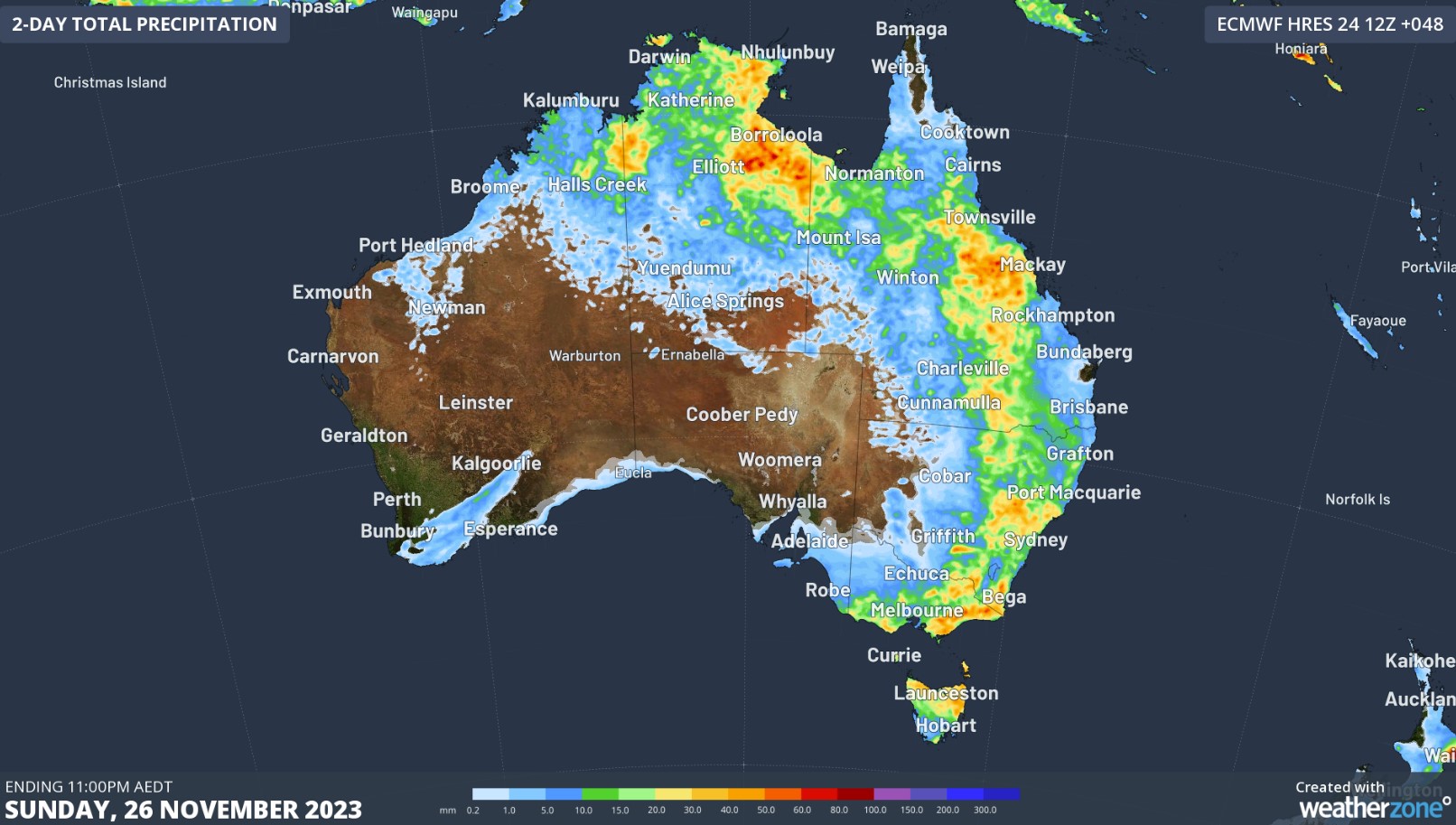November hasn't seen this much rainfall in a 24-hour period in SA since 1998
The last 24 hours have seen heavy rain over Vic and far eastern SA, with impressive deluges.
This week promised heavy rain over the southeast and north of Australia, as Anthony Sharwood wrote early week. And that's exactly what happened: showers, heavy rainfall, large hails, and lightning storms hit the NT, Qld, NSW, Vic, and SA.

A broad low-pressure trough, supported by successive slow-moving cut-off lows and troughs in the upper levels, brought showers and thunderstorms over southeastern SA and Vic. Some impressive deluges were recorded, mainly in the morning and late evening of Friday 24th:
- Naracoorte Aerodrome (eastern SA) received 71.4mm of rainfall in 24 hours, this hasn't happened in November since 1998. This amount represents more than double the average monthly rainfall in 24 hours.
- Nhill Aerodrome (western Vic) recorded 35.8mm of rainfall, the highest amount in 24 hours in November in the last 20 years. This amount represents more than the average monthly rainfall in 24 hours.
- Kanagulk (western Vic) recorded 38.6mm of rainfall, the highest amount in 24 hours in November in the last 19 years. This amount represents more than the average monthly rainfall in 24 hours.
- Dartmoor (western Vic) received 32.4mm of rainfall in 24 hours, this hasn't happened in November since 2009.
This low and troughs will slowly move to the east, causing showers, scattered thunderstorms, large hail, deluges, and flash-flooding this weekend, mainly over northern Tas, central and eastern areas of Vic (possibly including Melbourne), central, northern, southern, and eastern NSW, southern, central and northwest Qld, also over the NT.
Accumulating precipitation in 48 hours between 80-100mm is expected across the NT's east and Qld's central-east, 60-80mm of rain should fall over northeastern Vic and southern NSW, and 40-60mm over northern Tas, central NSW southern Qld, and central and western Vic.

Looking ahead, next week will remain unstable, with showers and thunderstorms over the south and eastern areas of Australia. So, keep following the Weatherzone forecast and BOM's warnings.